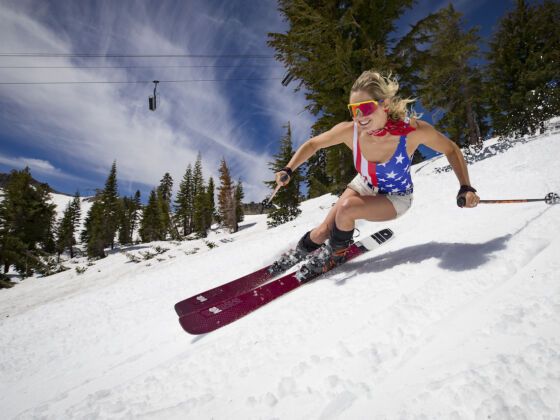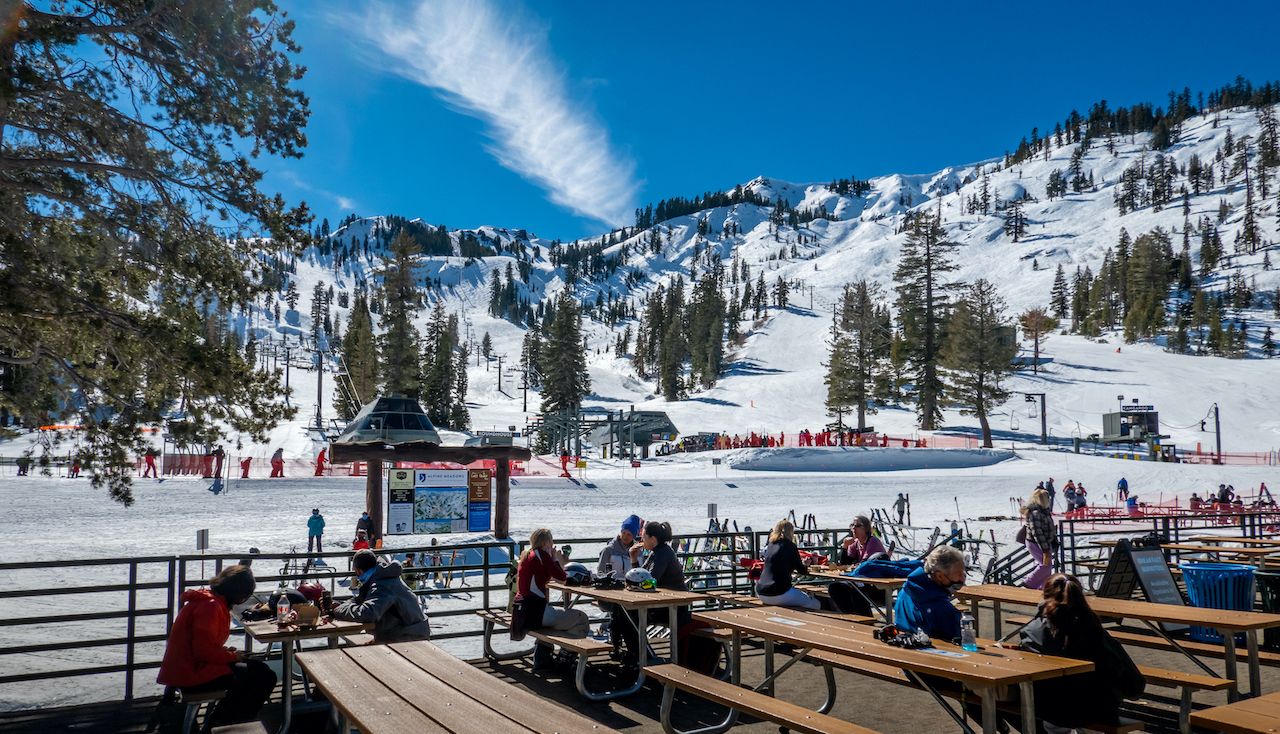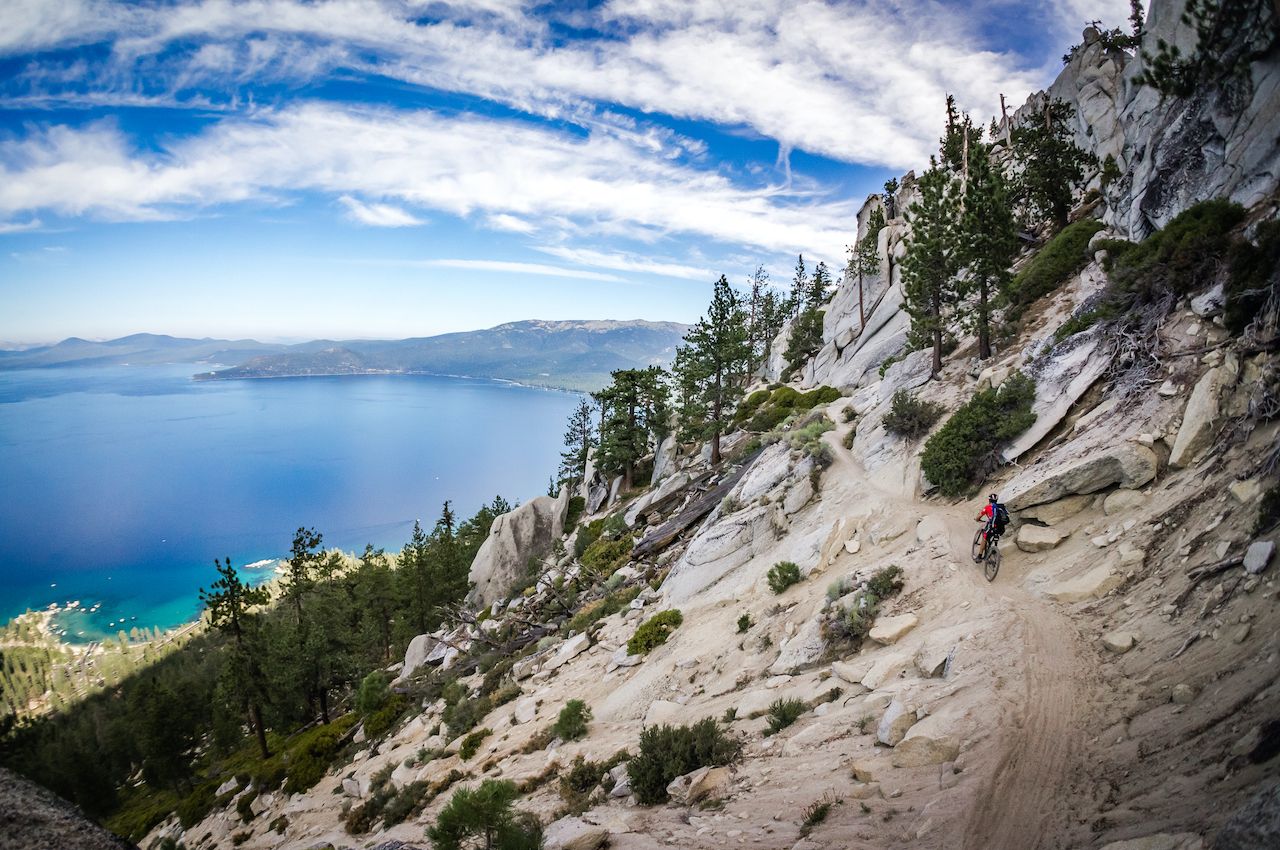Shuffling through the Squaw Valley parking lot wearing slightly too-big rental boots, already starting to sweat through my base layer in the late March sun, I heard a voice call out from my left. “Hurry up and hit the mountain,” the voice said, disembodied behind the skis I had slung over my left shoulder. “It’s gonna get slushy this afternoon.”
It was 9:00 AM on a Friday. The parking lot was only half as full as it had been on my last Friday morning ski day in early February, but I hustled to the ticket booth nonetheless. I had my sights set on KT-22, wary of the crowd that might have formed in the hour that the resort had been open, as crowds often do at what’s been called the greatest chairlift in North America. There was no need to rush. What little line there was had already dissipated by the time I reached the gate. I rode the lift twice before even sharing a chair with another skier.
This, I discovered, is among the many joys of spring skiing at Squaw Valley.






